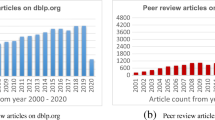Abstract
Position-patch based approaches have been proposed for single-image face hallucination. This paper models the face hallucination problem as a coefficient recovery problem with respect to an adaptive training set for improved noise robustness. The image-adaptive training set is constructed by corrupting a local training set of position-patches by adding specific amounts of noise depending on the input image noise level. In this proposed method, image denoising and super-resolution are simultaneously carried out to obtain superior results. Though the principle is general and can be extended to most super-resolution algorithms, we discuss this in context of existing locality-constrained representation (LcR) approach in order to compare their performances. It can be demonstrated that the proposed approach can quantitatively and qualitatively yield better results in high noisy environments.












Similar content being viewed by others
Notes
If \(\gamma = \{\gamma _{m}\}_{m=1}^{M}\), the l p norm of γ is defined as \(\|\gamma \|_{p} = (|\gamma _{1}|^{p} + |\gamma _{2}|^{p} + ... + |\gamma _{M}|^{p})^{\frac {1}{p}}\), for a real number p≥1. The l 0 norm is a pseudo-norm and is defined as the number of non-zero coefficients in γ,i.e., ∥γ∥0 = #{m:γ m ≠0}
References
Baker S, Kanade T (2002) Limits on super-resolution and how to break them. IEEE Trans Pattern Anal Mach Intell 24(9):1167–1183
Chang H, Yeung DY, Xiong Y (2004) Super-resolution through neighbor embedding. In: Computer Vision and Pattern Recognition, 2004. CVPR 2004. Proceedings of the 2004 IEEE Computer Society Conference on, IEEE, vol 1, pp I–I
Dabov K, Foi A, Katkovnik V, Egiazarian K (2007) Image denoising by sparse 3d transform-domain collaborative filtering. IEEE Trans Image Process 16(8)
Dong W, Li X, Zhang L, Shi G (2011) Sparsity-based image denoising via dictionary learning and structural clustering. In: Computer vision and pattern recognition (CVPR), 2011 IEEE Conference on, IEEE, pp 457–464
Donoho DL, Elad M, Temlyakov VN (2006) Stable recovery of sparse overcomplete representations in the presence of noise. IEEE Trans Inf Theory 52(1):6–18
Elad M, Aharon M (2006) Image denoising via sparse and redundant representations over learned dictionaries. IEEE Trans Image Process 15(12):3736–3745
Farsiu S, Robinson D, Elad M, Milanfar P (2004) Advances and challenges in super-resolution. Int J Imaging Syst Technol 14(2):47–57
Hardie RC, Barnard KJ, Armstrong EE (1997) Joint map registration and high-resolution image estimation using a sequence of undersampled images. IEEE Trans Image Process 6(12):1621– 1633
Irani M, Peleg S (1993) Motion analysis for image enhancement: resolution, occlusion, and transparency. J Vis Commun Image Represent 4(4):324–335
Jiang J, Hu R, Han Z, Lu T, Huang K (2012) Position-patch based face hallucination via locality-constrained representation. In: Multimedia and expo (ICME), 2012 IEEE International Conference on, IEEE, pp 212–217
Jiang J, Hu R, Wang Z, Han Z (2014) Noise robust face hallucination via locality-constrained representation. IEEE Trans Multimedia 16(5):1268–1281
Jin Y, Bouganis CS (2015) Robust multi-image based blind face hallucination. In: Proceedings of the IEEE Conference on Computer Vision and Pattern Recognition, pp 5252–5260
Liu C, Shum HY, Freeman WT (2007) Face hallucination: Theory and practice. Int J Comput Vis 75(1):115–134
Liu X, Tanaka M, Okutomi M (2013) Single-image noise level estimation for blind denoising. IEEE Trans Image Process 22(12):5226–5237
Ma X, Zhang J, Qi C (2010) Hallucinating face by position-patch. Pattern Recogn 43(6):2224–2236
Mairal J, Bach F, Ponce J, Sapiro G, Zisserman A (2009) Non-local sparse models for image restoration. In: Computer Vision, 2009 IEEE 12th International Conference on, IEEE, pp 2272–2279
Nasrollahi K, Moeslund TB (2014) Super-resolution: a comprehensive survey. Mach Vis Appl 25(6):1423–1468
Park SC, Park MK, Kang MG (2003) Super-resolution image reconstruction: a technical overview. IEEE Signal Process Mag 20(3):21–36
Schultz RR, Stevenson RL (1996) Extraction of high-resolution frames from video sequences. IEEE Trans Image Process 5(6):996–1011
Shao L, Yan R, Li X, Liu Y (2014) From heuristic optimization to dictionary learning: a review and comprehensive comparison of image denoising algorithms. IEEE Trans Cybern 44(7):1001–1013
Singh A, Porikli F, Ahuja N (2014) Super-resolving noisy images. In: Computer vision and pattern recognition (CVPR), 2014 IEEE Conference on, IEEE, pp 2846–2853
Thomaz CE (2012) Fei face database. http://fei.edu.br/~cet/facedatabase.html
Wang N, Tao D, Gao X, Li X, Li J (2014a) A comprehensive survey to face hallucination. Int J Comput Vis 106(1):9–30
Wang Z, Hu R, Wang S, Jiang J (2014b) Face hallucination via weighted adaptive sparse regularization. IEEE Trans Circuits Syst Video Technol 24(5):802–813
Yang J, Wright J, Huang TS, Ma Y (2010) Image super-resolution via sparse representation. IEEE Trans Image Process 19(11):2861–2873
Zhang Y (2013) Theory of compressive sensing via l 1-minimization: a non-rip analysis and extensions. J Oper Res Soc China 1(1):79–105
Zhou W, Bovik AC, R Sheikh H, P Simoncelli E (2004) Image quality assessment: From error measurement to structural similarity. IEEE Trans Image Process 13(1):1–14
Author information
Authors and Affiliations
Corresponding author
Rights and permissions
About this article
Cite this article
Rohit U., Abdu Rahiman V. & George, S.N. A robust face hallucination technique based on adaptive learning method. Multimed Tools Appl 76, 16809–16829 (2017). https://doi.org/10.1007/s11042-016-3953-6
Received:
Revised:
Accepted:
Published:
Issue Date:
DOI: https://doi.org/10.1007/s11042-016-3953-6




